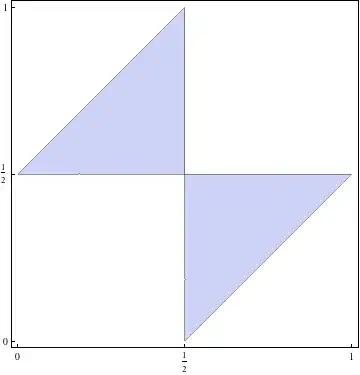Suppose a samurai wants to try out his new sword and cuts a piece of bamboo twice, randomly, so now there are $3$ lenghts of bamboo. What is the probability of these 3 pieces being able to form a triangle?
I have never came across a continuous probability problem before, but I tried doing it anyway and got a result of 0.25 probability.
My solution: Let $L$ be the original lenght of the bamboo, $x$ be the place of the first cut and $y$ be the place of the second cut. Writing out all the 3 triangle inequalities, we come to the conclusion that no piece of bamboo can have more than $L/2$ lenght, then the probability we're looking for is: $$ \frac{\int_{x=0}^{L/2}(\int_{y=L/2}^{x+L/2}(1)dy)dx}{\int_{x=0}^{L}(\int_{y=x}^L(1)dy)dx}=0.25 $$
